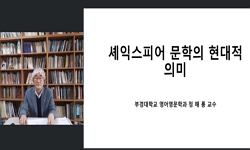Purpose: An intensivist is a key factor in the mortality of patients admitted to the intensive care unit (ICU). The aim of this study was to evaluate the effect of an intensivist on clinical outcomes of patients admitted to a surgical ICU. Methods:...
http://chineseinput.net/에서 pinyin(병음)방식으로 중국어를 변환할 수 있습니다.
변환된 중국어를 복사하여 사용하시면 됩니다.
- 中文 을 입력하시려면 zhongwen을 입력하시고 space를누르시면됩니다.
- 北京 을 입력하시려면 beijing을 입력하시고 space를 누르시면 됩니다.



Impact of a surgical intensivist on the clinical outcomes of patients admitted to a surgical intensive care unit
한글로보기https://www.riss.kr/link?id=A100033462
- 저자
- 발행기관
- 학술지명
- 권호사항
-
발행연도
2014
-
작성언어
English
- 주제어
-
등재정보
KCI등재,SCOPUS,SCIE
-
자료형태
학술저널
- 발행기관 URL
-
수록면
319-324(6쪽)
- 제공처
-
0
상세조회 -
0
다운로드
부가정보
다국어 초록 (Multilingual Abstract)
Purpose: An intensivist is a key factor in the mortality of patients admitted to the intensive care unit (ICU). The aim of this study was to evaluate the effect of an intensivist on clinical outcomes of patients admitted to a surgical ICU.
Methods: During the study period, the surgical ICU was converted from an open ICU to an intensivist-directed ICU managed by an intensivist who was board certified in both general surgery and critical care medicine. We compared consecutive patients admitted to the surgical ICU before and after implementing the intensivist-directed care. The primary outcome was ICU mortality, and secondary outcomes were hospital mortality, 90-day mortality, length of hospital stay, ICU-free days, ventilator-free days, and ICU readmission rate.
Results: A total of 441 patients were included in this study: 188 before implementation of the intensivist and 253 after implementation. Clinical characteristics were not different between the two groups. ICU mortality decreased from 11.7% to 6.3% (P = 0.047) after implementation, and 90-day mortality also decreased significantly (P = 0.008). The adjusted hazard ratio of the intensivist for ICU mortality was 0.43 (95% confidence interval, 0.22?0.87; P = 0.020). ICU-free days (P = 0.013) and the hospital length of stay (P = 0.032) were significantly improved after implementing the intensivist-directed care. Before implementation period, 16.0% of patients were readmitted, compared with only 9.9% after implementation (P = 0.05).
Conclusion: Implementing intensivist-directed care in the surgical ICU was associated with significant improvements in ICU mortality and significant clinical outcomes.
목차 (Table of Contents)
- INTRODUCTION
- METHODS
- RESULTS
- DISCUSSION
- REFERENCES
- INTRODUCTION
- METHODS
- RESULTS
- DISCUSSION
- REFERENCES
1 Gutsche JT., "Who should care for intensive care unit patients?" Crit Care Med 35 (2 Suppl) : S18 ~ S23, 2007
2 Stawicki SP., "The surgeon and the intensivist : reaching consensus in intensive care triage" J Surg Educ 64 : 289 ~ 293, 2007
3 Johnson JL., "The role of the surgeon as intensivist : an international perspective" Curr Opin Crit Care 12 : 357 ~ 369, 2006
4 Nathens AB., "The impact of an intensivist-model ICU on trauma-related mortality" Ann Surg 244 : 545 ~ 554, 2006
5 Hawari FI., "The effect of implementing high-intensity intensive care unit staffing model on outcome of critically ill oncology patients" Crit Care Med 37 : 1967 ~ 1971, 2009
6 Nathens AB., "The delivery of critical care services in US trauma centers : is the standard being met?" J Trauma 60 : 773 ~ 783, 2006
7 Ewart GW., "The critical care medicine crisis : a call for federal action : a white paper from the critical care professional societies" Chest 125 : 1518 ~ 1521, 2004
8 Schoenfeld DA., "Statistical evaluation of ventilator-free days as an efficacy measure in clinical trials of treatments for acute respiratory distress syndrome" Crit Care Med 30 : 1772 ~ 1777, 2002
9 Pronovost PJ., "Physician staffing patterns and clinical outcomes in critically ill patients : a systematic review" JAMA 288 : 2151 ~ 2162, 2002
10 Gajic O., "Physician staffing models and patient safety in the ICU" Chest 135 : 1038 ~ 1044, 2009
1 Gutsche JT., "Who should care for intensive care unit patients?" Crit Care Med 35 (2 Suppl) : S18 ~ S23, 2007
2 Stawicki SP., "The surgeon and the intensivist : reaching consensus in intensive care triage" J Surg Educ 64 : 289 ~ 293, 2007
3 Johnson JL., "The role of the surgeon as intensivist : an international perspective" Curr Opin Crit Care 12 : 357 ~ 369, 2006
4 Nathens AB., "The impact of an intensivist-model ICU on trauma-related mortality" Ann Surg 244 : 545 ~ 554, 2006
5 Hawari FI., "The effect of implementing high-intensity intensive care unit staffing model on outcome of critically ill oncology patients" Crit Care Med 37 : 1967 ~ 1971, 2009
6 Nathens AB., "The delivery of critical care services in US trauma centers : is the standard being met?" J Trauma 60 : 773 ~ 783, 2006
7 Ewart GW., "The critical care medicine crisis : a call for federal action : a white paper from the critical care professional societies" Chest 125 : 1518 ~ 1521, 2004
8 Schoenfeld DA., "Statistical evaluation of ventilator-free days as an efficacy measure in clinical trials of treatments for acute respiratory distress syndrome" Crit Care Med 30 : 1772 ~ 1777, 2002
9 Pronovost PJ., "Physician staffing patterns and clinical outcomes in critically ill patients : a systematic review" JAMA 288 : 2151 ~ 2162, 2002
10 Gajic O., "Physician staffing models and patient safety in the ICU" Chest 135 : 1038 ~ 1044, 2009
11 Pronovost PJ., "Organizational characteristics of intensive care units related to outcomes of abdominal aortic surgery" JAMA 281 : 1310 ~ 1317, 1999
12 Kahn JM., "Intensivist physician staffing and the process of care in academic medical centres" Qual Saf Health Care 16 : 329 ~ 333, 2007
13 Dimick JB., "Intensive care unit physician staffing is associated with decreased length of stay, hospital cost, and complications after esophageal resection" Crit Care Med 29 : 753 ~ 758, 2001
14 Pronovost P., "Impact of the Leapfrog Group's intensive care unit physician staffing standard" J Crit Care 22 : 89 ~ 96, 2007
15 Mirski MA., "Impact of a neuroscience intensive care unit on neurosurgical patient outcomes and cost of care : evidence-based support for an intensivist-directed specialty ICU model of care" J Neurosurg Anesthesiol 13 : 83 ~ 92, 2001
16 Kumar K., "Impact of 24-hour in-house intensivists on a dedicated cardiac surgery intensive care unit" Ann Thorac Surg 88 : 1153 ~ 1161, 2009
17 Carson SS., "Effects of organizational change in the medical intensive care unit of a teaching hospital : a comparison of 'open' and 'closed' formats" JAMA 276 : 322 ~ 328, 1996
18 Angus DC., "Critical care delivery in the United States : distribution of services and compliance with Leapfrog recommendations" Crit Care Med 34 : 1016 ~ 1024, 2006
19 Levy MM., "Association between critical care physician management and patient mortality in the intensive care unit" Ann Intern Med 148 : 801 ~ 809, 2008
20 Ghorra S., "Analysis of the effect of conversion from open to closed surgical intensive care unit" Ann Surg 229 : 163 ~ 171, 1999
21 Korean Society of Critical Care Medicine., "1st White paper from Korean Society of Critical Care Medicine" Korean Society of Critical Care Medicine, 2009
동일학술지(권/호) 다른 논문
-
The risk factors of early recurrence after hepatectomy in hepatocellular carcinoma
- 대한외과학회
- Soon-Keun Kwon
- 2014
- KCI등재,SCOPUS,SCIE
-
- 대한외과학회
- Seung Yeon Ko
- 2014
- KCI등재,SCOPUS,SCIE
-
Causes and outcomes of revisional bariatric surgery
- 대한외과학회
- Ji Yeon Park
- 2014
- KCI등재,SCOPUS,SCIE
-
Relationship between 15-hydroxyprostaglandin dehydrogenase and gastric adenocarcinoma
- 대한외과학회
- Jae Hyun Kang
- 2014
- KCI등재,SCOPUS,SCIE





 DBpia
DBpia






